Which teams won't be around for long in the 2021 NCAA women's basketball tournament? Which teams are expected to have extended stays in the San Antonio area? Now that we've got a bracket in hand, it's time to rank all 64 teams in the field. Before the first round tips off Sunday and Monday, let's look at the ceiling for each team, what could derail their March Madness (and your Women's Tournament Challenge bracket) and which teams have the best chance of cutting down the nets at the Alamodome on April 4.

57. Troy Trojans
Best case: The Trojans, who led the nation in field goal attempts per game at just over 76, make just enough of them to make their first-round game close and wildly entertaining. Senior Alexus Dye registers her national-best 22nd double-double by halftime.
Worst case: The pace is still fast, and Dye still puts up her numbers, but Troy has more empty trips than the Griswolds and gets blown out.

56. Wyoming Cowgirls
Best case: The last time the Cowgirls were in the NCAA tournament (in 2008), current head coach Gerald Mattinson was in his fifth year of a 16-year tenure as an assistant at Wyoming. That was a five-point loss to Pittsburgh. This time the Cowgirls make it even closer with their slow pace keeping them in the game until the final five minutes.
Worst case: That deliberate offensive philosophy that worked so well to help Wyoming limit its three MWC tournament opponents to an average of 50 points this time hurts the Cowgirls more. They fail to score 50 and go quietly.

55. Lehigh Mountain Hawks
Best case: Because of the Patriot League's abbreviated season, Lehigh didn't even begin playing until January. The Mountain Hawks were still able to play 15 games and produce the league's best offense. Coach Sue Troyan also got creative with a different defensive scheme in the championship game against Boston University that produced the program's first NCAA tournament appearance since 2010. All that ingenuity and sophomore Frannie Hottinger's scoring is needed to keep Lehigh competitive in Round 1.
Worst case: Pulling an upset usually means getting some easy baskets. Lehigh ranked 324th in the country in offensive rebounding. The Mountain Hawks don't get anything easy and don't put up much of a fight.

54. Marist Red Foxes
Best case: Marist made its first NCAA tournament since 2014 with defense. The 50 points a game the Red Foxes allow is second best in the country. Yet it's the offense of Willow Duffell, who scored 20 points or more twice this season, one of those occasions in the MAAC championship game, that makes Marist competitive in Round 1.
Worst case: For the first time all season, the Red Foxes are playing a team inside the NET top-150, and for the first time all season, they allow 80 points in a noncompetitive opening-round loss.

53. Idaho State Bengals
Best case: The Bengals head to their first NCAA tournament since 2012 playing their best basketball of the season after blowing out rival Idaho in the Big Sky championship game. That momentum and their typical balanced scoring makes them competitive until the final minutes. Idaho State's first-round loss is the closest the program has ever been in four tournament games.
Worst case: Estefania Ors, who made her first five 3-pointers against Idaho, isn't quite as accurate and the Bengals, whose previous three NCAA tournament losses have been by an average of 30 points, are blown out again.

52. Wright State Raiders
Best case: As a freshman two years ago, Angel Baker came off the bench and scored 22 points against Texas A&M in the first round of the NCAA tournament after averaging just 9.2 during the season. Now she is scoring at a team-leading 18.2 PPG clip. This time she also scores 13 points above her average for 31, leading the Raiders to a first-round upset.
Worst case: Baker hits her scoring average but needs 20 shots to get there and the typically stingy Wright State defense is a bit too generous in a double-digit opening-round loss.

51. VCU Rams
Best case: The Rams finally broke through after three straight losses in the Atlantic 10 championship game to make their first NCAA tournament since 2009 and just second all time. They did it largely with defense and the 3-point shooting of senior Taya Robinson. VCU employs the same strategy in Round 1 and comes just as close as it did 12 years ago as a No. 10 seed, a six-point loss to Rutgers.
Worst case: With a lower seed than the Rams had in 2009, that strategy isn't nearly enough and the A-10's fifth-place team is a quick one-and-done.

50. Drexel Dragons
Best case: Junior guard Keishana Washington continues her torrid pace and puts up a third straight 30-point game. With two minutes left, she has the ball in her hands with a chance to tie. The Dragons come up short, but the effort sets Washington up for some national preseason recognition next fall.
Worst case: One of the worst rebounding teams in the country (only 10 teams grab fewer defense rebounds than Drexel), the Dragons' lack of size is immediately exposed, and they have no answer.

49. Middle Tennessee Lady Raiders
Best case: The Lady Raiders chased Rice all season in Conference USA. With the opportunity to finally play the Owls in the tournament championship game, Middle Tennessee cashed in to reach its first NCAA tournament since 2016. Anastasia Hayes (26.5 PPG), the second-leading scorer in the country, and her sister Aislynn (13.9 PPG), give the Lady Raiders the kind of offensive punch to compete with anyone. That is exactly what they do. Anastasia sets up Aislynn for the game winner and Middle Tennessee reaches the second round for the first time since 2007.
Worst case: Only four other teams in the country attempt more 3-pointers than the Lady Raiders, but in the second half too many of them miss and it's a short stay of the CUSA champs.

48. Bradley Braves
Best case: Missouri State provided the rest of the Missouri Valley Conference an opportunity, and Bradley ran with it. With the Lady Bears opting out of the MVC tournament due to COVID-19 concerns, and Drake playing without two of its top scorers and head coach in the title game, the Braves took advantage and moved forward to win the automatic bid. Bradley rides that good fortune right into a first-round upset.
Worst case: Bradley's luck runs out. Trouble defending the paint and rebounding, issues that the Braves managed to overcome to beat Drake, are no longer manageable. Bradley's first trip to the NCAA tournament is a short one.

47. Belmont Bruins
Best case: Riding high from her brilliant rookie season that included OVC freshman of the year and tournament MVP honors, 5-6 Destinee Wells plays brilliantly in the first round. Belmont is the talk of the tournament for about an hour -- until a Bruins shot at the buzzer just misses, ruining their chances of a first-round upset.
Worst case: Somebody reminds both Wells and backcourtmate Tuti Jones before the game that they are, in fact, freshman, and they play like it. Belmont's stay is short and unmemorable.

46. UC Davis Aggies
Best case: The Aggies missed seven weeks of their season because of COVID-19-related issues. But once they got going, they were dominant in the Big West, where they have won five consecutive regular-season titles. UC Davis also played Oregon tough in early February. The confidence drawn from that game and the play of conference player of the year Cierra Hall helps the Aggies to a first-round stunner.
Worst case: Hall is the Aggies' best player, but she had plenty of help on the way to the Big Dance. Unfortunately, she doesn't get enough of it in San Antonio, and the idea of an upset disappears quickly.

45. Central Michigan Chippewas
Best case: One of the best offensive teams in the country, the Chippewas are the only team to have a pair of 20 points-per-game scorers: senior Micaela Kelly and sophomore Molly Davis. They are also third nationally in both 3-pointers made and attempted. Offense is the reason Central Michigan has made three straight NCAA tournament appearances and reached the Sweet 16 in 2018. The Chippewas don't get that far in 2021, but they pull a first-round stunner.
Worst case: While CMU can score, the Chippewas give up plenty at the other end. They are in the bottom third in several significant defensive categories and just can't get enough stops in a first-round shootout loss.

44. Stephen F. Austin Ladyjacks
Best case: The Ladyjacks reached their first NCAA tournament since 2006 with defense, one of the stingiest in the country. The offense, which labored in two Southland Conference tournament games, bounces back. Six Ladyjacks average at least eight points per game and they all contribute in a first-round upset.
Worst case: The defense is still solid, and the offense is still balanced, but needs a little more punch. That one big shot never comes and SFA has a long five-hour bus ride back from San Antonio before prepping for its move to the WAC next season.

43. BYU Cougars
Best case: The Cougars sneaking into the field might give the rest of the country a chance to see Shaylee Gonzales. The sophomore guard missed all of last season with a knee injury only to come back to rank fifth in the WCC in scoring and third in assists. Gonzales pairs with senior Paisley Harding in a backcourt that can give any opponents fits. Those two reach peak potential and BYU pulls of a first-round upset.
Worst case: It turns out the offensive woes that befell the Cougars in the WCC championship games against Gonzaga were no fluke. The 43-42 loss shook BYU's confidence, and it doesn't return. Another low-scoring effort spells trouble in a disappointing first-round loss to Rutgers.

42. UCF Knights
Best case: With a stifling zone defense that held opponents to the lowest points per game average in the country (49.2 PPG), the Knights prove maddening to play against. It's enough to get them the first NCAA tournament win in program history.
Worst case: The Las Vegas bookmakers set the over/under for UCF's opening-round game at 75, and it still goes under. The Knights' defense is as dependable as usual, but their offense struggles. Unable to make 3-pointer -- a category in which UCF ranked 309th in the country this season -- an early deficit is impossible to erase.

41. Wake Forest Demon Deacons
Best case: One of the best players in Wake Forest history is now the program's all-time winningest coach. Jen Hoover was a player the last time the Demon Deacons won an NCAA tournament game, beating Villanova in 1988. Wake Forest does it again behind seniors Ivana Raca and Gina Conti.
Worst case: The underclassmen desperately want to get Raca and Conti, the heart and soul of Wake Forest's recent resurgence, an NCAA tournament win, but despite freshman Jewel Spear's best efforts, the Demon Deacons are done after one game.

40. Washington State Cougars
Best case: The Cougars have had a flair for the dramatic in wins over UCLA and Arizona. At one point this season, they played four overtime games in two weeks. Pac-12 freshman of the year Charlisse Leger-Walker is the catalyst for all that excitement, and she hits a 25-footer at the buzzer to give the Cougars their first NCAA tournament win.
Worst case: As good as Leger-Walker is, it took her 17 shots per game to get her nearly 19 PPG with just a 35.9 field goal percentage. That inefficiency catches up with the Cougars, who fall short in another tight game in the opening round.

39. Florida Gulf Coast Eagles
Best case: The most prolific 3-point shooting team in the country does what it does best. The Eagles hoist up over 80 3-point shots in two games and become the darlings of the NCAA tournament. Thirty of those 3-pointers go in and sophomore Kierstan Bell makes almost as many media appearances with FGCU's first regional semifinal appearance.
Worst case: Live by the sword, die by the sword. The Eagles fall behind early in their opening-round game but keep shooting from deep to get back into the game. The shots just aren't falling and there is no comeback.

38. South Dakota Coyotes
Best case: Seniors Chloe Lamb and Hannah Sjerven combine for 43 points and go into Coyotes lore as South Dakota gets its first NCAA tournament win in its third trip to the Dance.
Worst case: The Coyotes are scrappy and tough just like they were in November against South Carolina and Gonzaga. But as was the case in those games, South Dakota comes up just short and goes out in the first round for the second straight tournament.

37. Michigan State Spartans
Best case: Nia Clouden might be the best player who has received the least attention in the country. That changes in the first round. She explodes for 34 points and the Spartans move to the round of 32 for the third time in the past five tournaments.
Worst case: Clouden had three games near the end of the regular season in which she failed to score in double figures. The aggressiveness was missing. The same issues resurface. Clouden has a rough second half and sophomore Alyza Winston's best efforts aren't enough in a first-round loss.

36. North Carolina Tar Heels
Best case: The Tar Heels haven't won an NCAA tournament game since 2015, but they snap the streak behind some torrid 3-point shooting from Petra Holešínská.
Worst case: The inconsistencies that plagued North Carolina much of the early part of the season return at the worst possible time. Janelle Bailey does her best inside to keep the Tar Heels alive, but the outside shooting isn't there. The Tar Heels go quietly in Round 1.

35. Florida State Seminoles
Best case: The Seminoles who beat Louisville show up for the NCAA tournament. Morgan Jones looks like a star and Florida State pushes for a Sweet 16 appearance, the program's first since 2017.
Worst case: The Seminoles who lost to Notre Dame in late February and blew a second-half lead against Syracuse in the ACC semifinals show up. Jones goes quiet for long stretches and Florida State is out on Day 1.

34. South Dakota State Jackrabbits
Best case: The break following the stunning quarterfinal loss to Omaha in the Summit League tournament is just what the Jackrabbits needed to regroup. Tylee Irwin is more comfortable in her role as the go-to scorer, with leading scorer Myah Selland still watching from the sideline with a knee injury, and South Dakota State wins another tournament game after reaching the Sweet 16 in 2019.
Worst case: Two weeks don't solve the offensive woes that characterized that loss to Omaha. Once again, the Jackrabbits can't get to 50 points and a once-promising season ends in disappointment.

33. Oregon State Beavers
Best case: The Beavers have lost just two games since Jan. 26, both to Stanford, and since the Cardinal are not on Oregon State's side of the bracket, the run continues. Early entry Talia von Oelhoffen, whose arrival coincides with the season turnaround, continues her magic touch as the Beavers upset their way to the Sweet 16.
Worst case: Von Oelhoffen is shut down as she was in the two games against Stanford, which amounted to a total of 12 points, and with 6-4 Taylor Jones in foul trouble, that is too much for Aleah Goodman and Sasha Goforth to overcome. The Beavers' stay in Texas is short.

32. Marquette Golden Eagles
Best case: Megan Duffy was on two Notre Dame teams that reached the Sweet 16, and she duplicates the feat in her first trip to the NCAA tournament as head coach with seniors Selena Lott and Lauren Van Kleunen combining for 85 points in first- and second-round wins.
Worst case: Lott fails to hit double figures for the fourth time in five games and the Golden Eagles are unable to shake the pain of a 34-point loss to UConn in the Big East tournament finals in a first-round loss.

31. Syracuse Orange
Best case: Health is restored. Tiana Mangakahia and Priscilla Williams are able to play at 100%, restoring the depth Syracuse did not have in the ACC tournament. Mangakahia is not only healthy, she plays the best basketball of the season with double-digit assists in two games and one of the best stories in sports over the past two years ends on a personal high note.
Worst case: The young players like Williams and Kamilla Cardoso just aren't NCAA tournament-ready, and the moment proves too big at this stage of their careers. The veterans like Mangakahia, Kiara Lewis and Emily Engstler aren't able to play well enough to compensate, and Syracuse's stay is one-and-done.

30. Oklahoma State Cowgirls
Best case: After Oklahoma State beat Oklahoma in the quarterfinals of the Big 12 tournament, Cowgirls junior guard Ja'Mee Asberry, who scored 28 points after missing her first 12 shots, said that shooters need to keep shooting. That is exactly what she does right into Oklahoma State's first Sweet 16 in seven years.
Worst case: Sometimes while Asberry, the most accurate 3-point shooter in the Big 12, is shooting, she and her teammates forget they have an All-American in the middle. Natasha Mack averages a double-double but sometimes isn't the first option. That happens too many times in Round 1 and Oklahoma State is quickly back in Stillwater.

29. Virginia Tech Hokies
Best case: The two weeks between the end of the ACC tournament and the start of the NCAA tournament was ample time to let Aisha Sheppard's ankle heal. The Hokies' all-time leading 3-point shooter catches fire from deep and Virginia Tech pulls a stunner in Round 2.
Worst case: Sheppard is healthy, but the shots still aren't dropping. That puts too much heat on Elizabeth Kitley in the post, and when she gets in foul trouble, the Hokies don't escape the first round.

28. Iowa State Cyclones
Best case: Ashley Joens is one of the most talented scorers in the country. She's just 5-11 yet does most of her work in the lane. And she does it averaging of 23.6 points per game, which ranks ninth nationally. The NCAA tournament offers a showcase for the rest of the country to see her distinctive style and Jones doesn't disappoint with a pair of 30-point games. The Cyclones advance to the Sweet 16.
Worst case: Iowa State tied Arkansas with the fourth-most made 3-pointers made this season with 260, averaging 10 per game. Two big contributors to that are freshmen Lexi Donarski and Emily Ryan. Unfortunately, the magnitude of the NCAA tournament gets to them and their shooting strokes. Joens is forced to carry too much of load and the Cyclones bow out in Round 2.
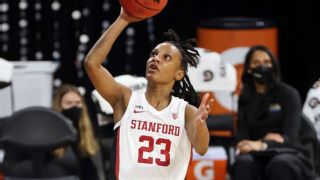

27. South Florida Bulls
Best case: The offense that sputtered so profoundly after the Bulls' three-week pause still struggles to find a rhythm, but senior Bethy Mununga, the nation's second-leading rebounder, seemingly grabs every miss. She finishes with 20 rebounds in Round 1, almost single-handedly pushing USF to the second round for the first time since 2016.
Worst case: Even while winning the AAC tournament, South Florida shot just 30.2% from the field. That doesn't improve and no amount of rebounding can compensate in a first-round loss.

26. Iowa Hawkeyes
Best case: Iowa has the second-highest-producing offense in the country as well as two of the country's best offensive players. Freshman Caitlin Clark in the nation's best scorer (26.9 PPG and second-best distributor (7.1 APG). Junior Monika Czinano (19.4 PPG) is the country's most accurate shooter (67.5 FG%). The Hawkeyes light up the scoreboard on their way to their second Elite 8 in a row.
Worst case: Iowa has the worst defense in the Big Ten, allowing nearly 80 points per game. When the pace slows the Hawkeyes are unable to get keep stops and bow out in Round 2.

25. Texas Longhorns
Best case: Offensive consistency has been elusive all year. A 70-point game was followed by a 59-point output. Texas scored 69 against TCU, then 84 against Iowa State. Charli Collier has provided the only consistent production, but when the backcourt of Joanne Allen-Taylor, Celeste Taylor and Kyra Lambert is locked in the Longhorns are dangerous. That is exactly what happens in route to a Sweet 16 appearance.
Worst case: The opening round goes the other way. The guards suffer an early crisis of confidence and Collier only seems to be able to score on offensive rebounds. That isn't nearly enough, and Vic Schaefer suffers his earliest NCAA tournament exit as a head coach.

24. Northwestern Wildcats
Best case: The Big Ten regular-season co-champs from a year ago, the Wildcats' best season ever was incomplete when the NCAA tournament was canceled. They enter this year's event knowing it's their second chance and take advantage. Behind leading scorer and Big Ten Defensive Player of the Year Veronica Burton, Northwestern gets to the program's first Sweet 16.
Worst case: This year's Wildcats were not quite the offensive team of last season and shooting woes are impossible to overcome in a disappointing first-round loss.

23. Alabama Crimson Tide
Best case: The Crimson Tide's first trip to the NCAA tournament since 1999 was built on the play of seniors Jasmine Walker, Jordan Lewis, and Ariyah Copeland, who combined to average 51 points per game. Bolstered by that firepower and the experience of having played 12 NCAA tournament-caliber teams this season, Alabama secures coach Kristi Curry's first tournament win since she took Purdue to the Sweet 16 in 2006.
Worst case: The trio gets their points, but just can't do it efficiently enough. Alabama is also one of the worst teams in the country defending the 3-point shot (334th in 3-point percentage allowed) and that is problem late in a first-round loss.

22. Oregon Ducks
Best case: The break the Ducks got after losing in the Pac-12 tournament quarterfinals is just what they needed. The rest and practice time helps coach Kelly Graves hit the reset button on an offense that had gone from smooth and efficient to plodding. Taylor Mikesell finds her shooting stroke and makes six 3-pointers in Round 1, her first game making more than two since Jan. 1.
Worst case: The injury to the right foot of freshman Te-Hina Paopao that keeps her on the sideline continues to have a ripple effect. Mikesell must spend too much time handling the ball. Erin Boley and Sydney Parrish don't get enough space to get their shots off and Nyara Sabally is bottled up inside. There is no regrouping. A season that began with so much promise ends quickly and quietly.
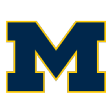
21. Michigan Wolverines
Best case: As dominant as Big Ten Player of the Year Naz Hillmon can be, she needs help. In the Wolverines' last three wins of the season, they had at least two other double-figure scorers. Leigha Brown and Akienreh Johnson become more than that, actually leading the way for much of Michigan's first two games before Hillmon helps close the deal. Michigan gets to the regionals.
Worst case: Hillmon scored 50 points against Ohio State on Jan. 21. In their last game against Northwestern in the Big Ten tournament, the entire Wolverines team scored 49 points. Michigan is heading in the wrong direction and is a first-round upset victim.

20. Rutgers Scarlet Knights
Best case: The Scarlet Knights had a five-week COVID-19-related pause, and it didn't seem to impact them. They came out of it and ripped off nine straight wins. While C. Vivian Stringer's signature "55 Press" defense has been effective, it's really the Rutgers offense -- which ranks in top-20 nationally in several categories -- that has driven the success. In the regional semifinals, senior Arella Guirantes has a brilliant 30-point game, lifting the Scarlet Knights to their first Elite 8 since 2008 and the days of Epiphanny Prince.
Worst case: In Round 2, the press leaves Rutgers vulnerable to transition 3-point shooting like it did in the Big Ten tournament quarterfinals against Iowa. The adjustment comes too late and the careers of seniors Guirantes, Tekia Mack and Mael Gilles end on the first weekend.

19. Georgia Tech Yellow Jackets
Best case: Nell Fortner has remade the Yellow Jackets program in just two years. The improvement of Lotta-Maj Lahtinen and Lorela Cubaj have been big reasons why. Their play and solid defense help lift Georgia Tech to its first tournament win in seven years and first Sweet 16 appearance since 2012.
Worst case: That defense always seems to keep the Yellow Jackets in games, but they often struggle on offense. They fail to hit 70 for the eighth straight game and go down in their first game.

18. Gonzaga Bulldogs
Best case: Senior Jill Townsend, fresh off the winning shot against BYU in the WCC championship game, more than makes up for lost tournament time. In 2019, Townsend broke her leg in the WCC tournament and had to watch on television as her Gonzaga teammates lost a close game at Oregon State in the second round. With a pair of 20-point games, Townsend makes sure the Zags stay is a little longer and they advance to their first Sweet 16 since 2015.
Worst case: Defense and rebounding, Gonzaga's two calling cards during the season, aren't as sharp in San Antonio. Experience and Townsend get the Zags through one win, but not two.

17. Missouri State Lady Bears
Best case: On the 20th anniversary of Missouri State (then Southwest Missouri State) making the Final Four, the story almost writes itself. The Lady Bears shock the college basketball world and reach the Final Four again. This time there is no Jackie Stiles like in 2001. Instead, this Lady Bears team is well-balanced offensively with Brice Calip leading the way and excellent defensively -- Jasmine Franklin was MVC Defensive Player of the Year. But both teams had plenty of veterans, were No. 5 seeds, and both made it to the NCAA tournament's final weekend.
Worst case: The Lady Bears hadn't had a close game since mid-February and really could have used a Jackie Stiles for the big moments when they get one in Round 2. Missouri State comes up a couple of plays short and the careers of seniors Calip, Abby Hipp, Elle Ruffridge and Emily Gartner end sooner than anyone in Springfield had hoped.
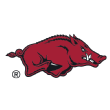
16. Arkansas Razorbacks
Best case: Remember that 2019 SEC tournament where Chelsea Dungee had two 30-point games and got the Razorbacks to the final? Well, she does it again during her final days in an Arkansas uniform. Another pair of 30-point nights has coach Mike Neighbors not only flashing back to 2019, but also to 2016 and Kelsey Plum when his Washington team also made the Final Four.
Worst case: Dungee, second in the country in free throw attempts and first in makes, gets to the line plenty, but doesn't make enough. The Razorbacks go cold from deep and it's too much to overcome. Arkansas exits in Round 2.
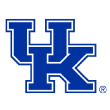
15. Kentucky Wildcats
Best case: Epic tournament runs are so often built on the shoulders of star players, and Kentucky has one of the biggest in Rhyne Howard. Yet, it's Chasity Patterson who carries the Wildcats through the first two rounds with Howard playing a complementary roll along with Dre'Una Edwards. Then Howard explodes in the regionals. She and first-year coach Kyra Elzy become the talk of the tournament as Kentucky reaches the Final Four.
Worst case: Howard does star from the outset but gets little help. Every possession is a struggle unless Howard can beat a double-team and the Wildcats are a first-round upset victim.

14. West Virginia Mountaineers
Best case: The Mountaineers haven't been to the NCAA tournament since 2017, representing the longest gap between appearances in Mike Carey's 20 years in Morgantown. Leading scorer Kysre Gondrezick, the only senior in the starting lineup, decides her team should then make up for that lost time. West Virginia reaches the second Sweet 16 in program history and the first since 1992.
Worst case: The season's last few weeks took their toll, and the banged-up Mountaineers just barely make it out of the first round before bowing out in the second.

13. Tennessee Lady Vols
Best case: The Lady Vols relish the ability to play outside the SEC, where their opponents just aren't used to the kind of length Tennessee possesses. The shortest player in the regular rotation is Rae Burrell at 6-1. Defense and rebounding carry the Lady Vols through the first two rounds. Then in the regional semifinals, Rennia Davis and Burrell have one of those incredible dynamic duo kind of games. They are both unstoppable and combine for 50 points. They aren't quite as good in the regional final, but Davis finds a way late. Tennessee makes its return to the Final Four, the program's first since 2008.
Worst case: The turnover issues that have plagued the Lady Vols for the past few seasons show up again at the wrong moment. They were 13th in the SEC in turnover margin this year but were able to overcome it in most games. Not this time in Round 2, and Tennessee gets bounced.

12. Indiana Hoosiers
Best case: Experienced with two seniors and two juniors in the starting lineup and fundamentally sound, the Hoosiers carve up opposing defenses three times to reach the Elite Eight for the first time. Senior guards Grace Berger and Ali Patberg are nearly flawless in Indiana's run.
Worst case: The decisions by Jaelynn Penn and Danielle Patterson to opt out in February robbed Indiana of its depth. The starters routinely played well over 30 minutes per game in the last few weeks of the season. They appear to have run out of gas by the time they reach San Antonio and fail to reach the second weekend.

11. Arizona Wildcats
Best case: Aari McDonald returned to Arizona for a shot at completing the job of restoring the Wildcats' program, and she makes it count. Her speed, always her greatest asset, is uncontainable. She gets to the basket whenever she wants. Cat Reese and Trinity Baptiste make enough timely shots to get Arizona to the Elite Eight, completing the best season in program history.
Worst case: The shooting woes that plagued the Wildcats in the season's final five games don't get better with the two-week layoff. McDonald gets her points, but only with a high volume of shots. That's enough to get by in the first two rounds, but not in the Sweet 16.

10. UCLA Bruins
Best case: The Bruins have been a Final Four contender for the past few seasons but haven't broken through. This is the year they do. Offensively, they have needed a third scorer to complement Michaela Onyenwere and Charisma Osborne. Natalie Chou is that player. Her scoring average went from 10 points per game during the regular season to 18 in the Pac-12 tournament. That propels UCLA to the final weekend for the first time and coach Cori Close becomes the go-to interview in San Antonio.
Worst case: The Bruins reach the Sweet 16, but the same thing happens that so often does in UCLA's big games: Onyenwere is the only reliable scorer. The regional semifinal becomes a repeat of the Pac-12 championship, when she scored 30 of UCLA's 55 points. That helps Onyenwere's WNBA draft status, but the Bruins don't survive.

9. Georgia Bulldogs
Best case: The season came together in Athens even better than many anticipated, and the expectations were already high. With four seniors in the starting lineup, they make their final run together memorable. Jenna Staiti, Gabby Connally, Que Morrison and Maya Caldwell play each game like its possibly their last college contest. That sense of urgency shoots the Lady Dogs into the Final Four.
Worst case: Staiti foul trouble at times this season curtailed Georgia momentum. That's what happens in the Sweet 16. When Connally and Morrison also lose their rhythm, there aren't any other paths to victory and this group of seniors falls short of its goals.

8. Louisville Cardinals
Best case: Dana Evans' disappointment over losses in the last two ACC tournaments -- a loss to Florida State in last year's semifinals and one to NC State just over a week ago -- fuel an unbeatable one-woman performance. Evans plays at the highest level of her career and carries Louisville to the Final Four. Once there, Evans continues to lead, while at the same time passing the torch to freshman Hailey Van Lith, who has a breakout performance as Louisville wins its first national championship.
Worst case: Evans has delivered in the clutch so many times in the last two seasons. But she wasn't able to in that loss to NC State in the ACC tournament championship game in Greensboro and comes up short once again. This time it happens in the Sweet 16 and Louisville's season ends abruptly short of the ultimate goal.

7. Baylor Bears
Best case: How does two-time defending national champion sound? That's exactly how the Lady Bears will head into next season after delivering Kim Mulkey her fourth title. After blistering through the first three rounds, Baylor turns the heavy lifting to NaLyssa Smith. Already an All-American by anyone's standards, Smith looks like the sport's best player over the second two weekends in San Antonio. Baylor cuts down the nets again.
Worst case: The Lady Bears are one of the country's best rebounding teams, they play great defense and share the ball extremely well. The one thing they don't do is shoot the 3-pointer. They rank 289th in attempts from beyond the arc and dead last, 343rd, in 3-point rate, meaning no team uses the 3-pointer as part of its offense less than Baylor. That hasn't been an issue all season, but it catches up to the Lady Bears in the Elite Eight, where their 17-game winning streak ends.

6. Maryland Terrapins
Best case: The first two rounds are the Katie Benzan show. She makes 3-pointers like most make layups and the Terps move through easily. Then as Angel Reese continues to get more acclimated and back into the flow, she and Diamond Miller become the dominate scorers as the Terps land in the Final Four. Then Ashley Owusu goes from a facilitator in the first four games to dominant scorer. With the offense, which was the highest scoring in the country this season, seemingly unstoppable, the Terps make a run at the title.
Worst case: As dominant and versatile as the Maryland offense is, the defense can be bad. And it is. It takes a shootout, but when the Terps eventually fall behind in the second round, they are unable to get key stops in a shocking upset.

5. NC State Wolfpack
Best case: Raina Perez, a 5-4 point guard, rides the momentum of the game-winning shot she hit in the ACC championship and becomes the darling of the NCAA tournament. A year ago, she was the Big West player of the year at Cal State Fullerton but lost in the conference tournament quarterfinals. Now with a 5-to-1 assist to turnover ratio in the first four games, she is playing in the Final Four.
Worst case: The Wolfpack's outside shooting that struggled at times in the ACC tournament never finds it mark in the first two rounds, either, and NC State struggles to get to the regionals. There Elissa Cunane gets in foul trouble and, when the shooting isn't there to bail them out, the Wolfpack get upset in the Sweet 16.
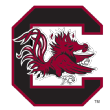
4. South Carolina Gamecocks
Best case: The push for South Carolina to run more offense through Aliyah Boston on the low block became a reality in the SEC tournament. Dawn Staley rode that wave into the NCAA tournament, and it delivered the Gamecocks to the Final Four. With more space on the floor, point guard Destanni Henderson flourishes with her speed and fearlessness. She is the Final Four MVP and South Carolina is crowned champion for the second time.
Worst case: The Gamecocks easily reach the Sweet 16, but once there the outside shooting goes cold. South Carolina went the entire season without relying on the 3-point shot, but when the Gamecocks really needed it there was nowhere else to turn. All the key contributors except Lele Grissett are expected back, but it's a long offseason in Columbia.

3. Texas A&M Aggies
Best case: The Aggies storm into the Final Four without having a single 20-point scorer in their first four games. Despite not getting a No. 1 seed, Gary Blair is having the time of his life, even in the bubble-like environment in San Antonio. First Aaliyah Wilson and then Jordan Nixon have explosive offensive games. Assistant Bob Starkey devises just the right defenses and, nearly 10 years to the day of his first national championship, Blair celebrates another.
Worst case: Just like in the loss to Georgia in the SEC semifinals, something is missing once the Aggies reach the regionals. When things start to head off track, there isn't one player to step forward to take command. Blair can't light that spark and Texas A&M .

2. UConn Huskies
Best case: No program rises to the occasion like UConn, and now it has a player in Paige Bueckers who has an uncanny way of being her best in big moments. Just like she did against Tennessee and South Carolina in the regular season, Bueckers, with a sizable dose of help from fellow freshman Aaliyah Edwards, helps the Huskies complete the job that the past three Final Four teams couldn't. UConn, which overcomes not having Geno Auriemma on the sideline for its first two games after he tested positive for COVID-19 on March 14, wins a 12th national championship on April 4.
Worst case: UConn gets to the Final Four, but like those past three teams, can't get over the hump in the national semifinals. Bueckers is good, but reverts to her performance in the early season and is not as assertive as Auriemma would like. The other freshmen, Edwards and Nika Mühl, play like rookies, and despite Christyn Williams' best efforts, another year passes without a title in Storrs.

1. Stanford Cardinal
Best case: The depth of talent that Tara VanDerveer has accumulated pays off. Cameron Brink fouls out of one game, but Fran Belibi produces instead. Lexi Hull has two off nights shooting, but Hannah Jump delivers plenty of 3-pointers. The Cardinal, having spent two months on the road early in the season, are the most equipped team to handle the contained environment. San Antonio native Kiana Williams is thrilled to be closing out her career at home and celebrates by winning Final Four Most Outstanding Player. Stanford celebrates its long season with a national championship.
Worst case: The Cardinal are on the brink of making their first Final Four since 2017, but in the Elite Eight they can't find the answers. No one steps up when Brink is sidelined with foul trouble. Williams and Hull go ice cold. Haley Jones tries to take over, which belies what Stanford was all season -- a balanced operation in which all the parts are moving in the same direction. The rhythm is missing on one bad night and the Cardinal fall short of not only a championship, but the Final Four altogether.
